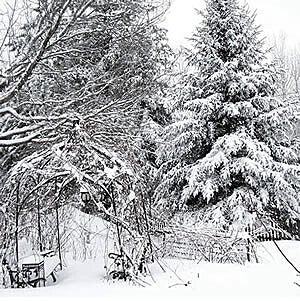How Do I "Winterize" My Irrigation System
 Without proper preparation, your sprinkler system might be damaged by freezing temperatures. Here are some tips from Rain Bird on how to prepare your irrigation system for winter conditions if you live in a region where it freezes. Please download the Rain Bird Homeowner's Guide to Winterization for detailed instructions on how to prepare your irrigation system for the winter months.
Without proper preparation, your sprinkler system might be damaged by freezing temperatures. Here are some tips from Rain Bird on how to prepare your irrigation system for winter conditions if you live in a region where it freezes. Please download the Rain Bird Homeowner's Guide to Winterization for detailed instructions on how to prepare your irrigation system for the winter months.
Step 1. Insulate your assets:
Shut off the water supply to the irrigation system. The main shut off valve for your irrigation system needs to be protected against freezing. Make sure it is wrapped with insulation (foam insulation tape and a plastic bag) to protect it from harsh winter temperatures and prevent it from freezing. If you do not have a main shut off valve, you might consider installing one as a preventative investment. Also, any above ground piping needs to be insulated. Self-sticking foam-insulating tape or foam insulating tubes commonly found at home supply stores are fine.
Step 2. Stay in control:
If you have an automatic system then you will need to "shut down" the controller (timer). Most controllers have a "rain-mode" which simply shuts off the signals to the valves. The controller continues to keep time, the programming information isn't lost (start times, valve run times, etc.) and the clock continues to run throughout the winter.The only change is that the valves will not activate. If your controller is responsible for activating a pump, as a precaution you should remove the wires that are connected to the MV (Master Valve) and common terminals. This will prevent the possibility of the pump being accidentally activated which could cause damage from overheating. An alternative to using the rain mode is simply to shut off the power to the controller. If you do, you'll need to reprogram the time and potentially all your other settings as well, in the spring.
Step 3. Drain the pipes:
Now you need to remove the water from the pipes and sprinklers so that it won't freeze/expand and break the pipe. There are several ways to drain your pipes: a manual drain valve, an automatic drain valve or the compressed air blow-out method. However, since there could be potential safety risks we recommend contacting your local irrigation specialist. Many offer sprinkler winterization services this time of the year.
Step 4. Protect valves and backflow preventers:
Insulate backflow preventers and valves if they are above ground. You can also use insulation tape for this. Be sure not to block the air vents and drain outlets on backflow preventers.